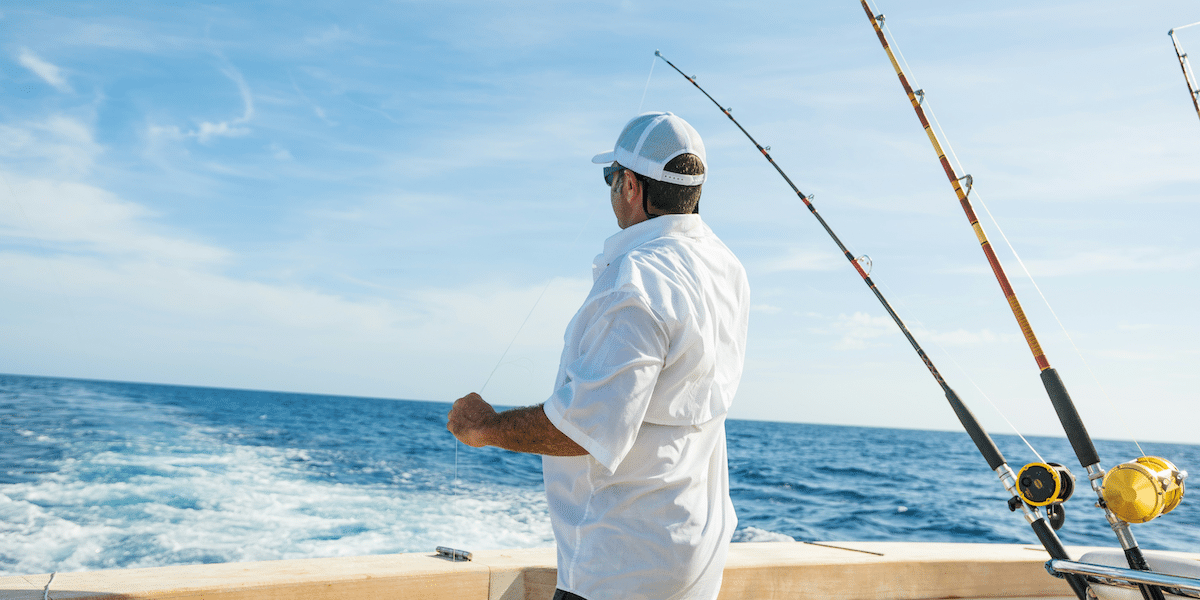Image commercially licensed from Unsplash
Kite fishing is a unique way of fishing used for centuries to capture large and elusive fish. It has recently become popular in many parts of the world due to its accessibility, efficiency, and sustainability.
This article will provide an overview of this traditional method of fishing, discussing what it involves and how it can be used most effectively.
What Is Kite Fishing?
Kite fishing is a traditional form of angling used in many parts of the world. It involves using kites to fly baited lines over water, allowing fishermen to fish further out than they could with a rod and reel.
The kite can be constructed from materials such as paper, cloth, or plastic, although modern versions often use lightweight synthetic fabrics more resistant to wind and water damage. With this technique, multiple baits can be placed at different depths to catch various species, including tuna, mackerel, and sailfish.
Kite Fishing Equipment
Kite fishing is an exhilarating and unique method of angling that has been gaining traction in recent years. The main components of kite fishing are as follows:
- Rods And Reels
Using reels in kite fishing is essential for an angler’s success. Therefore, equipment that helps see and reel in a catch is paramount. Hence, it would be best to purchase the best equipment from reliable suppliers in your location, such as Melton International Tackle, to ensure that you fulfill these three criteria:
- They should be able to accommodate heavy line weights while still providing smooth operation.
- They should have enough spool capacity to store hundreds of feet of monofilament or braided lines.
- They must be strong enough to withstand extreme circumstances when using heavier tackles.
By considering these criteria and other factors, such as gear ratio and drag system performance, anglers can select a rod and reel most suited for their needs.
- Fishing Kites
Fishing kites can be made from any material and come in various sizes, shapes, and styles. They offer anglers an alternative way to catch their desired prey without resorting to more traditional methods such as rod-and-line or netting.
- Baits And Lures
Baits can range from live or dead fish to squid, shrimp, and other marine organisms that attract predatory fish. On the other hand, lures often imitate prey such as small fish and insects, and they come in various shapes, like spoons, jigs, plugs, poppers, spinners, and swimbaits. However, it’s vital to match the size of the bait or lure with what type of fish you are trying to catch.
Benefits Of Kite Fishing
With the use of specialized designs and creative techniques, this method can provide an efficient alternative to traditional methods of catching fish. Here are some advantages that make kite fishing an attractive option for anglers:
- Catching Bigger Fish
The prospect of kite fishing presents an exciting opportunity for anglers to achieve their goal of catching bigger fish. With the right equipment and techniques, this style of fishing can be a great way to maximize success in terms of size and quantity.
- Covering More Water
Kite fishing allows anglers to cover large areas quickly and easily without moving around much. The bait is cast out from the kite at varying depths and angles to maximize chances for success. Additionally, this technique is optional; understanding how the wind interacts with the kite’s design will suffice.
- Safe And Environmentally Friendly
Kite fishing is an innovative, safe, and environmentally friendly way to bring in more fish. The process requires no hooks or lines as the bait is held up by the wind generated from the kite. Moreover, kites are also biodegradable and don’t pollute water sources with harmful chemicals like traditional fishing methods can.
Tips And Tricks For Kite Fishing
Through this comprehensive exploration, everybody can learn tips on ways to maximize their chances of achieving a successful haul.
- Use High-Quality Equipment
The use of high-quality equipment when kite fishing is essential. This includes well-crafted rods, reels, lines, and baits that are suited for various conditions. Additionally, the type of knot used must be considered, depending on whether one needs more strength or flexibility from their knots. Finally, having the right tools for launching and retrieving the kites will ensure the experience goes smoothly and safely.
- Experiment With Different Techniques
Fishing with a kite is an exciting and challenging way to increase your catch. With high-quality tools at hand, it’s time to experiment with different techniques:
- Slow Trolling: This technique allows you to move slowly along the water while keeping your bait near the surface. Use this method when fish are concentrated in shallow areas.
- Fast Trolling: This tactic involves moving quickly across open waters, allowing your bait to be pulled further into the ocean’s depths.
Using these two methods together can help maximize potential catches and provide more enjoyable opportunities on the water.
- Keep Your Gear In Good Condition
To keep your equipment operating at peak performance, here are some steps you should follow:
- Inspect all components for signs of wear and tear before each use.
- Clean any dirt or debris that has accumulated on the parts.
- Make sure the line is not frayed or tangled.
- Store the gear away from direct sunlight and moisture when not used.
By implementing best practices like these, anglers can keep their equipment running properly, ensuring they have an enjoyable experience on the water every time.
Conclusion
Kite fishing is an exhilarating and relatively modern way of angling that has been utilized worldwide for centuries. The method necessitates specific equipment such as reels, kites, baits, and lures for success. Nonetheless, it’s crucial for anglers to employ top-quality gear and try out different techniques.
Additionally, kite fishing provides a fantastic opportunity for anglers of all abilities to relish the experience of catching fish from a boat or the shore. With practice and perseverance, anybody can learn this entertaining and efficient technique.

















